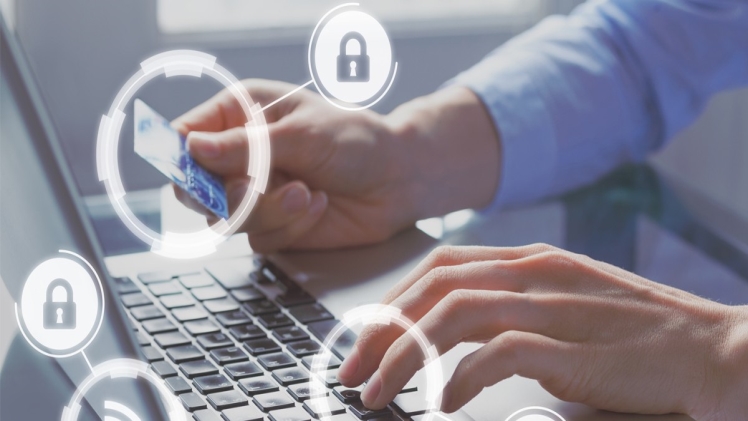In today’s digital landscape, where security threats loom large, the quest for seamless yet robust authentication methods has led to the rise of passive authentication. This innovative approach to verifying identities reshapes how we protect sensitive information and secure access to digital resources. In this blog post, we’ll explore what passive authentication entails, how it works, its benefits, challenges, current applications, and its implications for the future of cybersecurity.
Defining Passive Authentication
Passive authentication verifies a user’s identity based on behavioral or biometric factors without requiring explicit action from the user. Unlike traditional authentication methods that rely on passwords or tokens, passive authentication operates quietly in the background, continuously assessing the user’s interactions and patterns to authenticate their identity.
The key idea behind passive authentication is to create a frictionless user experience while maintaining high security standards. By leveraging the unique behavioral characteristics of individuals, such as typing cadence, mouse movements, facial recognition, or even voice patterns, passive authentication seeks to ensure that the right person is accessing the right resources without disrupting their workflow.
How Does Passive Authentication Work?
Passive authentication utilizes various techniques to continuously monitor and verify user identities. Here are some common methods employed in passive authentication systems:
Behavioral Biometrics
One of the primary techniques involves analyzing behavioral biometrics, which are unique patterns in human behavior. This can include keystroke dynamics (how a person types), mouse movements, touchscreen interactions, and even gait analysis (how a person walks). The system can detect anomalies indicating unauthorized access by establishing a baseline of these behaviors.
Biometric Recognition
Passive authentication systems can also leverage biometric identifiers like facial recognition, fingerprint scans, or voice recognition. These biometric traits are highly individualistic and difficult to replicate, making them effective for verifying identities passively.
Contextual Analysis
Another aspect of passive authentication involves contextual analysis. This includes factors such as the user’s location, time of access, device characteristics, and typical usage patterns. Deviations from established norms can trigger additional security measures.
Benefits of Passive Authentication
The adoption of passive authentication offers several compelling advantages over traditional methods:
- Enhanced Security: Passive authentication reduces reliance on static credentials like passwords, which are prone to theft or misuse. Behavioral and biometric factors are harder to replicate, enhancing security.
- Improved User Experience: By operating discreetly in the background, passive authentication minimizes user interruptions, providing a smoother and more seamless login experience.
- Continuous Monitoring: Unlike one-time authentication checks, passive systems continuously monitor user activities, adapting dynamically to changing threat landscapes.
- Reduced Friction: Passive authentication reduces friction and encourages compliance with security measures by requiring fewer manual interactions from users.
Challenges and Considerations
While passive authentication holds immense promise, it’s not without challenges and considerations:
- Privacy Concerns: Collecting and analyzing behavioral data raises privacy concerns. Ensuring transparency and consent is crucial to maintaining user trust.
- Integration Challenges: Integrating passive authentication systems with existing infrastructure can be complex. Seamless interoperability is essential to maximize efficiency.
- Security Risks: Like any technology, passive authentication is vulnerable to exploitation. Safeguards must be in place to prevent impersonation or manipulation.
- Regulatory Compliance: Compliance with data protection regulations such as GDPR or CCPA requires careful implementation and adherence.
Current Applications of Passive Authentication
Passive authentication is already being used across various industries and use cases:
- Financial Services: Banks and financial institutions use passive authentication to secure online transactions and detect fraud based on user behavior.
- Healthcare: Passive authentication helps protect patient data and ensure secure access to electronic health records.
- Enterprise Security: Many organizations deploy passive authentication to strengthen access controls for corporate networks and sensitive data.
Implications for Cybersecurity
As organizations increasingly embrace passive authentication, several cybersecurity implications come to light:
- Adaptive Security: Passive authentication aligns with the shift towards adaptive security measures that respond dynamically to threats rather than relying solely on static defenses.
- User-Centric Security: By prioritizing user experience alongside security, passive authentication fosters a culture of security awareness and compliance.
- Future Innovations: Advancements in AI and machine learning will continue to enhance passive authentication systems, making them more sophisticated and reliable.
The Future of Passive Authentication
Passive authentication is poised to become more prevalent across industries as the need for secure yet convenient access intensifies. Advances in artificial intelligence and machine learning will further refine these systems, making them more accurate and adaptable.
However, challenges such as ethical considerations, regulatory compliance, and evolving threat landscapes must be navigated to fully realize the potential of passive authentication.
Conclusion
Passive authentication represents a significant evolution in approaching identity verification and access control. By harnessing the power of behavioral and biometric factors, passive authentication promises heightened security without compromising user experience. As organizations seek innovative ways to combat cybersecurity threats, passive authentication stands out as a promising solution for the digital age.
In summary, passive authentication is not just a technological advancement; it’s a paradigm shift towards a more secure, user-centric approach to authentication. Embracing passive authentication means embracing a future where security and convenience go hand in hand. As this technology matures, it will play an increasingly vital role in safeguarding digital assets and ensuring trust in our interconnected world.

